LINX® 101: Is LINX The Solution To Your GERD Issues?
Up until very recently, fundoplication was the standard surgical method for treating patients with acid reflux and GERD, and was one of the only surgical options even available. Ten years ago, LINX hit the market and everything changed.
The LINX system is a small, flexible band of magnets enclosed in titanium beads. Each bead is connected and held together by titanium wires. The LINX system is placed around the esophagus just below the patient’s stomach by using a common, minimally invasive surgical technique called laparoscopy. The magnetic attraction between the beads helps prevent reflux by ensuring that the lower esophageal sphincter closes back up after swallowing.
The LINX procedure works great, particularly for patients who have a partially functioning sphincter. Instead of causing doctors to have to recreate the sphincter entirely like they do with fundoplication procedures like the Lap Nissen, the LINX system reinforces the existing sphincter and the magnets help keep the sphincter from opening prematurely. The food can still go down, it just doesn’t splash back up.
Choosing which anti-reflux surgery is best for you can be difficult, and where these procedures vary the most significantly is in other areas like the pros, cons, recovery details, and cost. Here’s the breakdown for LINX:
Pros of the LINX Reflux Management System surgery for reflux
· LINX is an outpatient procedure, so patients are free to go home the same day. This isn’t the case for most other anti-reflux procedures, where patients are required to stay overnight for observation
· The effectiveness rate of LINX is incredibly high, with 90-92% of patients coming off their daily medications immediately post-procedure
· The patient’s ability to burp and vomit are preserved identically to what they were pre-operatively (some other procedures have been said to cause patients to lose these abilities)
· The LINX procedure can be converted to a Lap Nissen down the line if necessary
· LINX offers patients the same effectiveness of the Lap Nissen fundoplication without the nasty side effects
· Least time off work—while surgeries like the Nissen can require patients to take two full weeks off of work, patients undergoing the LINX procedure can go back to work in just five days
Cons of the LINX surgery for reflux
· LINX is one of the newest anti-reflux procedures on the market. It’s only been around for 10 years, so there’s not as much research and data on its long-term effectiveness
· It takes the longest period of time to get insurance coverage authorization out of all the procedures, and boasts only an 80% success rate
LINX surgery recovery
Unlike other surgeries, patients are able to go straight home after undergoing the Linx procedure. There is no overnight stay required, and the patient is put on no special diets post-procedure other than being required to eat something small every three hours while they're awake for at least three months after the procedure. As with the Lap Nissen procedure, there is no weaning period post LINX. Patients can come straight off their daily medications. Doctors recommend that patients take 5 days off before returning to work after undergoing the LINX procedure.
Cost of the LINX surgery
The cost of anti-reflux procedures can get a bit dicey, and most of it depends on the patient’s specific deductible, as well as what type of procedure they underwent. Generally speaking, LINX is the toughest procedure to get insurance coverage for (80% effectiveness), and although many of our patients end up receiving coverage of some kind for the procedure, it generally takes longer to get coverage for LINX than it does for the other anti-reflux procedures. Not all of the private insurance carriers cover the procedure yet, so be sure to check with yours before undergoing the procedure. For those patients whose insurance doesn’t cover LINX, there are reasonable cash pay options available.
Picking the right anti-reflux procedure for you is difficult, which is why it’s important to understand not only how each one works, but also the various pros, cons, recovery details and costs associated with each procedure. The great news for patients with GERD is that you don’t have to make these decisions alone. We’ve got a fabulous group of some of the most knowledgeable doctors in the southeast on staff, and they’re always available to walk you through your options. Contact us to schedule a consult, and be well on your way towards eliminating GERD from your life!
